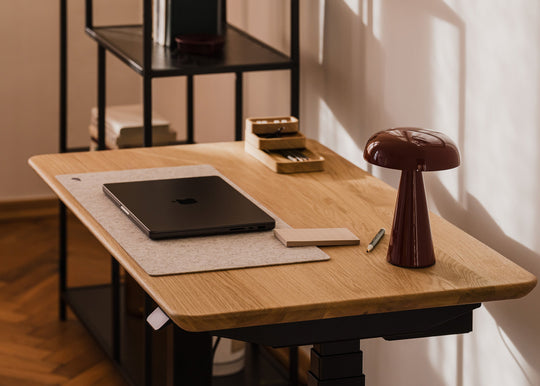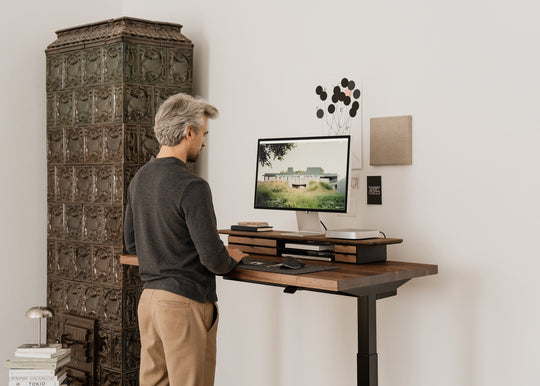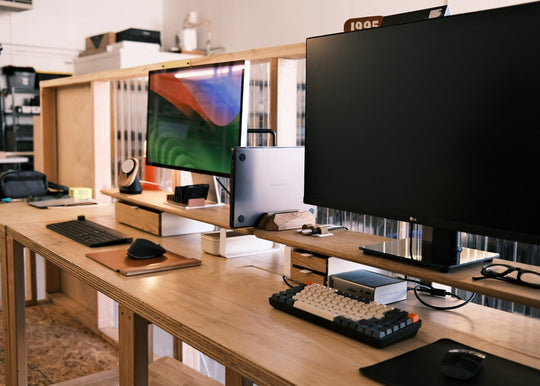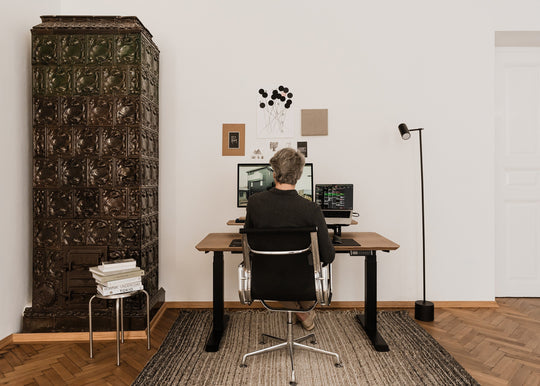
Hot desking – how effective is it?
Moving towards remote work as a result of the pandemic has influenced some companies to downsize their office space or to abandon having a physical office altogether. Despite the lockdown restrictions having been eased significantly, a lot of workers have decided against going back to the open space offices or their cubicles. Hybrid work models have been growing in popularity, one of them being ‘hot desking’. What is it and what are its benefits and downsides?

Photo by Bench Accounting on Unsplash
What is the deal with hot desking?
An office practices hot desking when the number of workspaces is lower than the number of employees; none of the employees have a permanent and exclusive desk. For this approach to be effective, all employees must be working in a hybrid model – partially remotely, partially in-office. Having arrived at the office, the employee sits at any available workspace and, at the end of the day, collects all their belongings and puts them in a private locker.
In order to avoid too many people coming into the office and running out of desks, the company can use one of the many seat-reserving apps that allow employees to check space availability for a specific time and book themselves a desk.

Photo by Arlington Research on Unsplash
Upsides and downsides of hot desking
As with all work models, hot desking has its own advantages and disadvantages. A few of its main benefits include:
- lower office maintenance costs – introducing a hot desking system allows a company to reduce the rented office space and equipment which leads to significant savings, especially for large corporations. This could also benefit the employees as instead of a permanent desk, they can receive better work equipment or even a raise,
- better space organization – not having a permanent spot in an office can encourage some reflection on which items are truly essential to performing our job. This helps to reduce the amount of clutter in the workspace and increase concentration on the task at hand,
- increased motivation and creativity – the lack of a routine and even slight changes in work environment can positively impact creativity and inspiration,
- improved productivity – booking a desk for a set time and having to vacate it for other colleagues can motivate us to finish all our tasks in the assigned time frame,
- greater inhouse communication – hot desking forces employees from different departments to work alongside each other which encourages collaboration and out of the box solutions to work related problems.
It is, however, important to note that hot desking is not an ideal work model for everyone – for some, the hassle related to ever changing workspace and having to organize their desk anew every time they’re in the office is a source of distraction and time wasting.
Lack of permanently assigned desks prevents adequate adjustment of its parameters to suit its user’s individual needs, especially when it comes to its height. An easy solution to this problem is introducing adjustable, or so-called ‘standing’ desks which allow for customization as well as changing position from sitting to standing.
Frequent changes of workspace can also weaken relationships amongst colleagues and decrease engagement. An inadequate organization of the hot desking system (for example a lack of an online booking system) increases the chances of workplace conflicts, especially when too many employees choose to work at the same time.

Photo by Carrie Allen on Unsplash
A temporary fad or the future standard?
Post-pandemic research has shown that most employees are not interested in permanently coming back to the office as the hybrid work model grows in popularity1. Maintaining the flexibility of time management and work organization afforded by remote work while avoiding the feelings of isolation and burnout is what makes hot desking so enticing for many. It is, most likely, not simply a fad but the ‘new normal’ with the ability to dominate workspaces in the near future.
1More details can be found here:
https://findstack.com/remote-work-statistics/
https://media.pracuj.pl/190686-powrot-do-biur-kontra-potrzeba-pracy-zdalnej
https://www.accenture.com/us-en/insights/consulting/future-work
https://www.gallup.com/workplace/390632/future-hybrid-work-key-questions-answered-data.aspx








